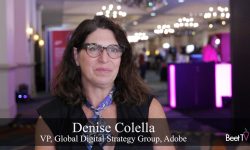Election Day is less than a month away, making it crucial for political campaigns to reach voters in hotly contested states and districts that have an outsized effect on the results. Targeting the 10% of U.S. households with undecided voters requires data and analytics, which have become much more reliable in this election cycle.
“The political ad community is starting to really trust the viewership data, particularly for cable operators,” said Dan Sinagoga, vice president of political advertising at Effectv, the advertising sales division of Comcast Cable. “There’s ample household-level viewership data, certainly in a privacy-compliant manner.”
In this interview with Beet.TV, Sinagoga discusses how political spending on media has come roaring back after the coronavirus pandemic disrupted campaign activities in spring. Though millions of people this year have voted by mail to avoid going to polling places in person, millions more have yet to cast a ballot by Nov. 3.
To reach people who are still undecided, political campaigns are doing their best to target viewers based on the latest available data.
“You’re seeing a greater use of analytics by agencies and consultants,” Sinagoga said. “It’s really helped the agencies make smarter decisions on how to reach that all-important 10% [of swing voters].”
Programmatic Growth
Political campaigns also are more reliant on programmatic media buying, which uses software to bid for advertising inventory, especially on over-the-top (OTT) and connected TV (CTV) platforms. Seventy-seven percent of political professionals in the 2018 midterm elections said they bought media programmatically, according to a Centro survey cited by researcher eMarketer.
“We made a conscious effort to get into the programmatic digital game to make transactions easy for our clients,” Sinagoga said. “About 25% of plans were going to be budgeted toward OTT/CTV resources. With our partnership with Freewheel, we’ve been able to put together robust resourcing against OTT and CTV to complement our traditional linear and digital play.”
Political campaigns also have grown more sophisticated about targeting, especially as they shift spending week-to-week during final stages of campaigning, Sinagoga said.
“Traditionally, the expectation had been: ‘run our spots.’ You’re cramming so much money into a short period of time,” he said. Improved data have helped to refine media buys, especially in reaching the all-important over-35 demographic that’s most likely to vote, he said.














































